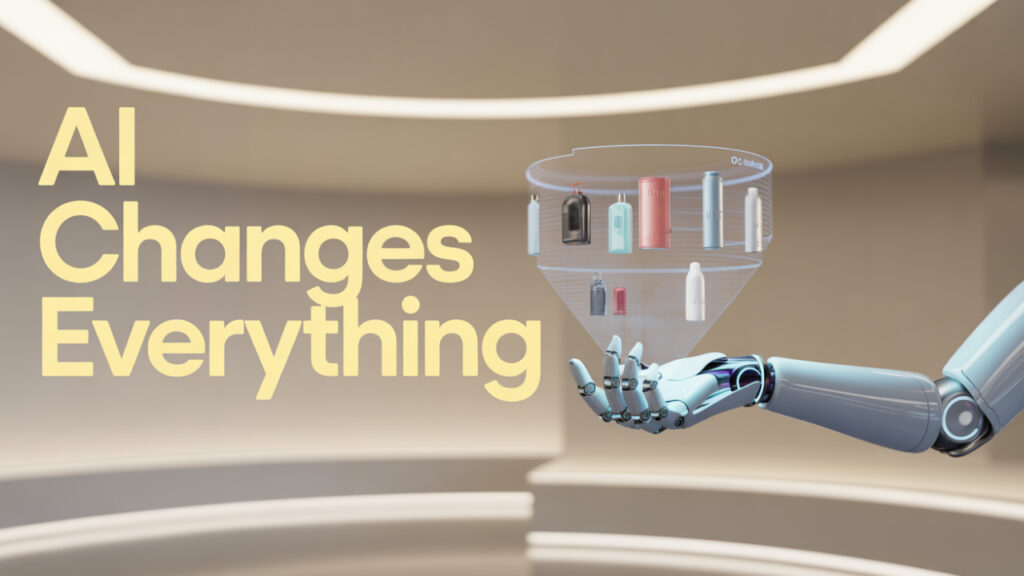From AI Shopping to AI Living: How Smart Homes, Wearables & Lifestyle AI Are Redefining Consumerism (Part 4)
Read the earlier parts:
• Part 1 – How AI Is Transforming Shopping Habits
• Part 2 – AI and the Future of Shopping in 2025
• Part 3 – The AI-Powered Customer: Trust, Ethics, and Hyper-Personalization
Introduction
So far, we’ve traced the journey from AI-driven shopping (Part 1), to deeper psychological shifts (Part 2), to customers wielding their own AI tools (Part 3). In Part 4, we step beyond the store and explore how AI becomes part of everyday life.
We’ll see how smart homes, wearables, and ambient intelligence will turn “shopping” into a continuous, integrated experience. Consumerism will no longer begin or end at checkout—it will flow throughout your daily life.
The Convergence of AI and Daily Life
The boundary between “retail” and “living” will blur. AI systems embedded in our environments will automatically sense needs, preferences, and context—and act accordingly.
- Ambient Intelligence Everywhere
Sensors in your home will track consumption patterns (e.g. food, detergent, toiletries) and trigger replenishment or suggest alternatives before you realize you need them. - Wearables as Shopping Interfaces
Smartwatches, AR glasses, or health trackers will alert you to deals or offers tailored to your physiological state (e.g. nutrition supplements when vitamin levels drop). - Voice & Gesture Commerce
Rather than tapping a phone, you might speak, gesture, or look at a product to buy it—“Hey, add that shirt I’m looking at to cart.”
Smart Homes That Shop for You
Your home will act like a mini retailer or concierge.
- Pantry & Replenishment AI
Fridges and cabinets equipped with computer vision will monitor inventory and place orders automatically. - Dynamic Product Trials
Smart mirrors, projection walls, or AR displays will let you visualize how new appliances, furniture, or décor fit into your actual space. - Contextual Bundling and Upsells
AI might suggest bundles—e.g. “Since you’re ordering coffee pods, would you like a discount on the new smart mug?”—all without you actively browsing.
Wearables & Health AI: The New Retail Frontline
Wearables won’t just track steps—they’ll drive purchase behavior.
- Health-Triggered Offers
A wearable senses you’re low on iron; it suggests supplements or diet kits tailored to your needs. - Adaptive Discounts
Based on your lifestyle, AI may offer promotions—e.g. a fitness tracker suggests discount on running shoes if your step count hits a threshold. - Virtual Wardrobes and Styling Guidance
AR glasses scan your outfit and suggest complementary accessories, sales, or alternative looks in real time.
The Rise of “Invisible” Commerce
As AI grows ambient, the act of purchasing becomes invisible to the user.
- Auto-Ordering Subscriptions
Consumables like skincare, groceries, or hygiene products arrive when they’re needed—no ordering required. - Micro-Transactions in Context
Buying becomes frictionless: “Yes” or “No” prompts when watching a show, in VR spaces, or while walking past a product. - Predictive Upsells
Based on usage patterns, AI may suggest complementary products proactively—without you even asking.
Impacts on Retailers & Brands
This shift from discrete shopping to continuous commerce changes how brands must operate.
- Ecosystem Integration
Brands will need to plug into smart home systems, wearable platforms, and ambient networks. - Continuous Loyalty Models
Instead of one-off purchases, success lies in being part of a user’s daily flow—earning subscription or usage loyalty. - Data-as-Service
As sensors and wearables become central, brands may sell analytics or insights (with consent) rather than just products.
Challenges & Ethical Questions
- Surveillance & Privacy
When homes track everything, where do we draw the line on intrusion? - Consent Fatigue
Too many prompts for permission may overwhelm users—leading them to default “no.” - Algorithmic “Coercion”
When your home suggests or auto-orders, is that service—or manipulation?
How to Prepare for AI-Living
- Design APIs & Integrations to plug into smart systems and wearables.
- Develop adaptive models that translate from product-centric to life-centric triggers.
- Offer opt-in visibility and control—let users see what’s auto-ordered and revise it.
- Build ethical frameworks for what your AI can suggest, auto-order, or bundle.
Conclusion
In Part 4, we saw how AI is transcending the traditional notion of shopping and merging with everyday life. As we move toward ambient intelligence, commerce becomes less about transactions and more about ongoing experiences.
In future parts, we can explore how AI citizenship, data ecosystems, and consumer identity will evolve by 2030.
Would you like me to write Part 5 next, or expand this into a longer version (with SEO, case studies, and visuals) ready for MotionRa?



